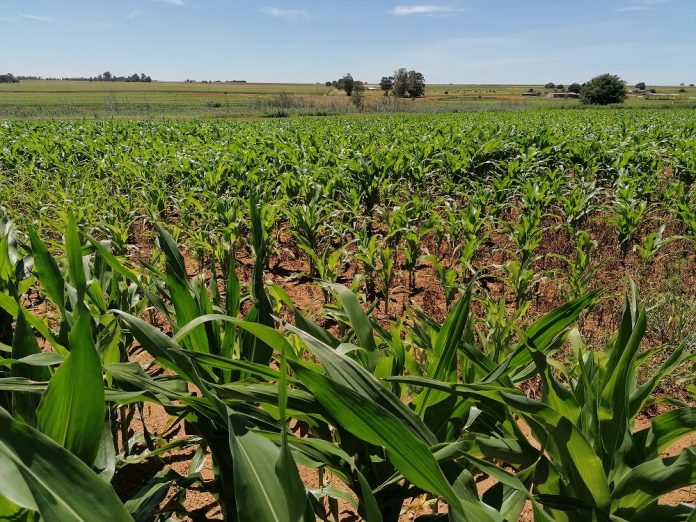The impacts of the pandemic and lockdown highlighted the fragility and limits of South Africa’s fresh-food system.
Rethinking food systems for South Africa needs to start with individual food producers on the ground and expand from there. This is the approach of a project called, ‘Towards recalibrating food systems during and beyond the Covid-19 pandemic’, which started in October 2020.
Funded by the WWF Nedbank Green Trust and coordinated by four non-governmental organisations, the project team is working with 108 individual food producers, predominantly women, including small-scale farmers, community gardeners and backyard/household vegetable producers in four municipal areas: 30 in eThekwini, 28 in uMgungundlovu, 24 in Gauteng and 26 in Bela Bela, Limpopo.
‘The impacts of the pandemic and lockdown highlighted the fragility and limits of South Africa’s fresh-food system. People need to take food production into their own hands and not wait for government projects,’ says Stephen Greenberg, who is coordinating the overall project through the Seriti Institute, one of the participating development agencies. The three others are GenderCC in Sedibeng, Gauteng, the Association for Rural Advancement in uMgungundlovu, KwaZulu-Natal, and the Southern Africa Food Lab in eThekwini, Kwa-Zulu Natal.
‘This project is about consolidating networks of small food producers and helping them to increase their production and livelihoods. Their success will attract other producers, and we grow the network this way,’ Greenberg explains. ‘We engage with the producers on agroecology methods and seed saving, and assist with infrastructure (such as water storage tanks and drip irrigation) and inputs (such as compost and seedlings) to sustainably increase their production.’
Many producers rely on rain-fed agriculture or expensive and erratic municipal water supplies. A key element of support for sustainable production is the development of alternative water-harvesting systems, such as on-site storage and the use of swales that channel water off roads and into the fields.
‘The primary aim of increasing production is to help the producers to generate or increase their income by selling into local market channels, notably people in their communities, street traders and informal markets,’ says Wanga Pholi, agricultural programme manager with Seriti.
All the partner agencies promote agroecological farming, a system where vegetables are farmed in harmony with the natural environment, including the economic use of water and enrichment of the soil with bio-/organic compost and without chemical fertilisers. Part of the project aims to assist small-scale businesses that produce seedlings and bio-compost to support the growers.
‘At each of the sites, a core of vegetable producers and some livestock producers (mainly poultry) were identified, ranging from backyard gardens of 20 sqm to smallholder farms and community gardens of half a hectare to 4 ha. All these producers are vital to food security,’ Pholi explains. Most are producing one or two popular crops, such as cabbages, tomatoes, spinach, chillies and peppers.
The project coordinators realised that they needed to start with a smaller number of producers for the project to succeed and are consolidating around 30 producers per site. ‘If you start too wide, it becomes unmanageable,’ says Pholi.
Extending the producers’ supply chain to potentially link into supermarkets and the city fresh-produce markets were initially considered, but volumes, variety, quality and consistency of supply remain challenges, so this is currently being pursued for only a minority of producers, who are able to meet requirements. The producers’ local communities are a far better target for surplus produce.
Improving production through agroecological farming includes improving both volumes and varieties so that if, for example, heavy rains damage the spinach crop, other hardier crops, such as peppers, will survive. The training includes peer-to-peer learning among the producers, and it takes the form of practical in-field learning or a combination of classroom and practical training. The producers favour practical training or ’learning by doing’.
‘Younger producers can gain invaluable experience from the older producers, especially with regard to deep knowledge and experience in “traditional” production methods (which tend to be more ecologically sound than conventional agricultural practices),’ Pholi explains.
‘There is also a false notion that young people are not interested in agriculture. If proper, consistent support is in place and young people can see the results, they will participate. There is currently an uneven involvement of young people across the sites, with several participating in uMgungundlovu, which encourages other people to join. There are fewer numbers of young people in the other sites, and this is something we still need to work on.’
The project coordinators are also working on engaging the government at multiple levels – local, district, provincial and national – to promote working together and agreeing on production systems and support that will consolidate and strengthen producers and increase access to markets. ‘Government is still focused on conventional inputs such as the mass purchasing and use of chemical fertilisers and pesticides that are harmful to the soil and for human consumption,’ says Greenberg. ‘Government provides budget in the tens of millions of rands to promote small-scale agriculture, but it needs to be invested in the right kind of inputs.’
The majority of small-scale producers use their own compost and manure for soil fertility. Only a small percentage use synthetic fertilisers, and mostly in combination with organic soil fertility methods. The majority of producers also use home remedies to combat pests and diseases, as well as intercropping. Some of the small-scale producers have been channelled into conventional production through the types of inputs and extension advice they have received from the government over the years. They are interested in exploring and adopting agroecological practices, as a low-cost, healthy alternative that also reduces their reliance on the government. This transition needs to be monitored for tangible progress to encourage other farmers to follow suit.
To offer continued support for the producers, the project team linked up with the Yebo Farmer app (https://www.yebofarmer.app/) to connect producers with trainers and mentors. ‘To pilot the app, 30 farmers were registered with the app, and data and credit allocated to each of them,’ says Greenberg. ‘We are currently monitoring the use of the app as we are hoping it will be a good platform to build up a core technical team that can support a growing producer network going forward.’
Join us and help support nature conservation, at no cost to you
You can also do good for the environment by banking, investing and insuring with Nedbank. Simply open a Nedbank Green Affinity-linked savings or investment account and take out short-term insurance with Nedbank. Then link your Nedbank Greenbacks to the Nedbank Green Affinity via the app to support nature conservation at no cost to you. Visit any Nedbank branch or call the Nedbank Contact Centre on 0860 555 111 for more information.
For more information on the projects, visit www.greentrust.org.za.
Download the book 30 Years of Foresight and Change.






